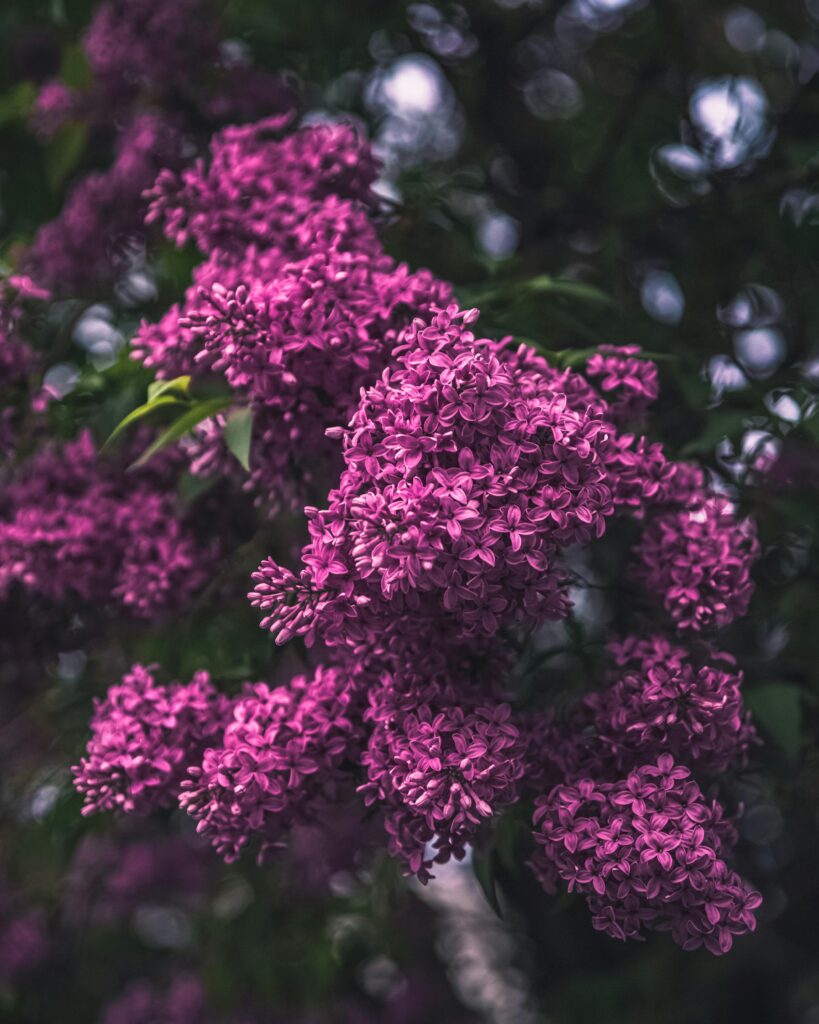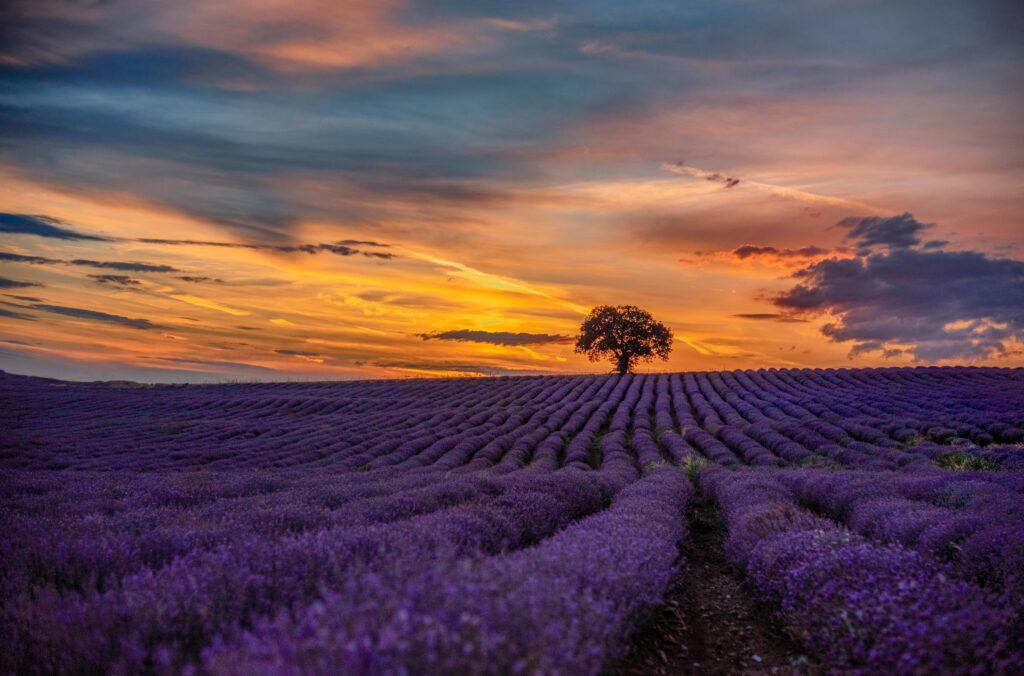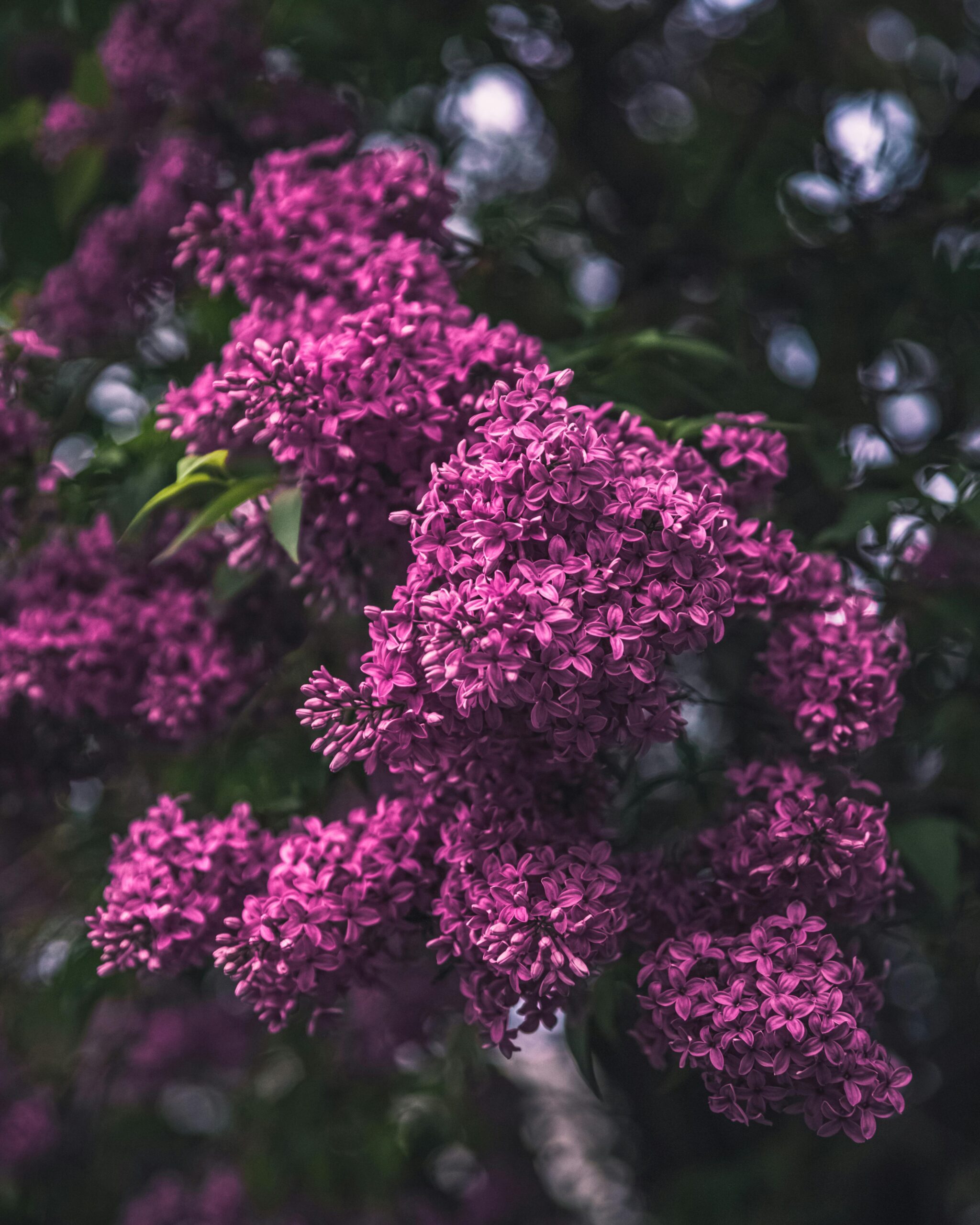Few plants in the world can captivate your emotions and senses as lavender does. In addition to being a flower, it has been used for centuries as a symbol of beauty, wellness, and tranquility because of its captivating scent and dreamy purple blooms. It has become one of the most popular plants on the planet, growing in backyards across the United States and in French fields that stretch as far as the eye can see.
This is more than just a pretty flower. It is a kitchen companion, a stress reliever, a healer, and a classic decorative beauty. Let’s examine the history of lavender in this blog, including its varieties, health advantages, symbolism, and why growing it in your garden could transform your life.

Table of Contents
🌱 A Plant With Ancient Roots
The history of lavender dates back thousands of years. Because Romans used lavender in their baths, laundry, and even to scent the air, the name is derived from the Latin word lavare, which means “to wash.” The Greeks treasured it as a medicinal herb, and the Egyptians used it in perfumes and embalming.
Today, it is still prized for the same reasons—its calming scent, therapeutic properties, and many applications. The fact that it has remained relevant for centuries is what makes it so genuinely magical. It is a symbol of purity, serenity, and rejuvenation in both contemporary spas and ancient temples.
🌸 Why It Feels So Special
It is not just another pretty flower. People all over the world are drawn to it because it appeals to nearly every sense.
- Sight: Its purple hue instantly calms the mind and adds elegance to any space.
- Smell: Its fragrance is known to reduce stress, promote relaxation, and improve sleep.
- Touch: Its soft petals and velvety leaves bring a sense of comfort.
- Taste: From teas to desserts, its subtle flavor brings a floral twist to recipes.
- Healing: Its essential oil is a natural remedy used in aromatherapy, skincare, and medicine.
Few plants manage to blend beauty, health, and utility the way lavender does.

🌿 How Americans Use the Fragrant Bloom
In the U.S., lavender has become a staple in both backyard gardens and large-scale farms. From the lavender fields of California and Washington to small pots on urban balconies, this plant is loved for being:
- Drought-Tolerant – Lavender thrives in sunny, dry conditions, making it perfect for many American climates.
- Low-Maintenance – Once established, it needs very little care.
- Pollinator-Friendly – Bees, butterflies, and hummingbirds adore lavender.
- Long-Lived – A well-kept lavender plant can thrive for years.
Whether you live in the Southwest desert or along the East Coast, there is a variety that can adapt to your region.
🌼 Popular Varieties of This Purple Herb
There are more than 45 known species in the Narcissus family of purple herbs, with hundreds of unique cultivars. Some of the most common ones found in American gardens include:
- English Variety (Lavandula angustifolia): The classic choice, loved for its fragrance and used in oils and sachets.
- French Type (Lavandula dentata): Recognizable by its serrated leaves and softer scent, often grown as an ornamental.
- Spanish Bloom (Lavandula stoechas): Famous for its “rabbit ear” petals that thrive in warmer states.
- Lavandin Hybrid (Lavandula × intermedia): A cross between English and Portuguese species, producing long stems and a strong aroma—great for essential oils.
Each type carries its charm, but all share the signature soothing scent that makes it unforgettable.
🌸 Symbolism and Meaning of the Purple Flower
It is more than a flower—it is a message in bloom. Across cultures, it has carried rich meanings:
- Calm and Serenity – Its purple fields have long symbolized peace of mind.
- Purity and Cleanliness – A reminder of its ancient use in bathing and purification rituals.
- Devotion and Love – Often gifted to show care, respect, and affection.
- Healing and Protection – Used as a protective charm in many traditions.
In modern America, lavender often symbolizes relaxation and wellness, making it a favorite in spas, yoga studios, and homes.
🌱 Tips for Growing This Soothing Plant
The good news? It is easy to grow if you give it the right conditions.
Planting Conditions
- Needs full sun (at least 6–8 hours daily).
- Loves well-drained soil—avoid overly wet spots.
- Prefers a slightly alkaline soil pH.
Planting Tips
- Space plants about 12–18 inches apart.
- Water young plants regularly, but once mature, they prefer less water.
- Prune back after flowering to keep the plant healthy.
Best U.S. Regions
- Thrives in the West (California, Oregon, Washington, Arizona, New Mexico).
- It can grow in the Midwest and Northeast with good drainage.
- Struggles in humid Southeast states, but some hardy varieties can survive.
🌿 Healing Benefits of the Aromatic Oil
It is a superstar in natural wellness. Its essential oil is one of the most popular in aromatherapy. Here’s why:
- Stress Relief – Lavender oil calms anxiety and reduces stress levels.
- Better Sleep – A few drops of lavender near your pillow can improve sleep quality.
- Pain Relief – Used in massages to ease headaches, sore muscles, and joint pain.
- Skin Care – Helps heal burns, acne, and cuts thanks to its antibacterial properties.
- Respiratory Health – Inhaled steam with lavender oil can ease coughs and congestion.
This is why that finds its way into lotions, candles, bath salts, teas, and even medical products.
🌸 Culinary Delights with the Scented Blossom
It is not just for your nose—it can delight your taste buds too. In the U.S., chefs and home cooks alike use lavender in:
- Lavender Tea – A calming drink for evenings.
- Baked Goods – Cookies, cakes, and scones with lavender bring a floral twist.
- Lavender Lemonade – Refreshing and visually stunning.
- Herbes de Provence – A French spice mix often used in American kitchens, featuring lavender.
Its flavor is delicate, so it’s best used sparingly to avoid overpowering dishes.
🌸 The Purple Beauty in U.S. Culture
It has become part of everyday American life:
- Lavender Farms & Festivals – Washington State, Texas, and California host huge lavender festivals every summer.
- Home Décor – Dried lavender is used in wreaths, sachets, and arrangements.
- Wedding Trends – Lavender bouquets and decorations symbolize purity and devotion.
- Self-Care Movement – Lavender candles, oils, and bath products are staples in wellness routines.

🌿 Interesting Facts About the Fragrant Herb
- It is part of the mint family (Lamiaceae).
- George Washington and Thomas Jefferson both grew lavender on their estates.
- Its oil was used during World War I to disinfect wounds.
- Bees that collect lavender nectar produce a special honey called lavender honey.
- In the Victorian era, lavender symbolized purity and feminine grace.
🌸 Why You Should Grow
If you’re wondering whether lavender is worth planting, here’s your answer:
- A Natural Air Freshener – Keeps your garden and home smelling heavenly.
- Attracts Pollinators – Great for the environment.
- Stress-Free Gardening – Easy to grow with minimal care.
- Endless Uses – From teas to oils to home décor.
- Beauty That Lasts – Fresh or dried, lavender keeps its charm year-round.
Planting lavender is not just about gardening—it’s about creating a sanctuary of peace right outside your door.
🌸 Conclusion: The Purple Gift of Nature
Avender is not just a flower. It is a piece of nature-painted art, a comforter, and a healer. It calms the mind with its aroma. It cheers the soul with its blooms. It heals the body with its oils. It is understandable why it has endured for centuries and continents, remaining one of the most cherished plants in America and beyond.
Perhaps this is the year to begin growing it if you have never done so before. Imagine coming outside on a warm summer day to the sound of contented bees, a sight of purple beauty, and a wave of calming fragrance. It is more than just a plant; it’s a peaceful, happy experience.
Don’t merely admire lavender the next time you see it. Take a deep breath, allow the aroma to calm your mind, and keep in mind that you are in front of one of nature’s greatest gifts.
